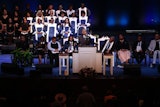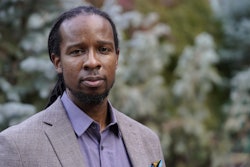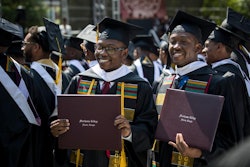While there have been a number of different worthwhile programs designed to help disadvantaged minorities achieve a college degree, the results of the Harlem Educational Activities Fund, or HEAF, are not typical.
At a time when only 20 percent of African-American high school students and only 16 percent of Hispanic students graduate from high school college-ready, compared with 32 percent of all students, according to a 2003 Manhattan Institute study, here is
HEAF’s track record:
• 93 percent of HEAF’s eighth-grade class is admitted to specialized or screened high schools.
• 100 percent graduate from high school (compared with 51 percent for African-American and 52 percent for Hispanic students nationwide).
• 98 percent enroll in four-year colleges and universities. These have included Yale, Dartmouth, Columbia, Syracuse, Binghamton, Morehouse, Hunter and Swarthmore.
• 95 percent complete college within six years (compared with about 36 percent for African-American and Hispanic students nationwide).
• 35 percent obtain an advanced degree (compared with 11 percent of all American college graduates, 6 percent of African-Americans and 4 percent of Hispanics).
HEAF’s students earn an average of $500,000 each year in merit-based scholarships.
“Our purpose is to instill in low-income and minority students as well as their families a college culture,” says Dr. Danielle Moss Lee, HEAF’s president and CEO.
“We start in middle school to raise expectations so that both students and their families see college as the inevitable next step after high school.”
HEAF serves high-potential, under-resourced public school students in New York City, particularly Harlem, Washington Heights and the Bronx. The organization focuses on middle-performing students who are ineligible for either remediation or gifted programs but have the potential to make significant academic and social gains.
HEAF reaches out to students at an early age to spark their interest in attending and completing college. Its six-week Summer Quest program provides students in the sixth through ninth grades with courses that concentrate on entrepreneurship, engineering, law, fine arts, foreign languages, urban waterways and more.
The program, launched in 1989, has helped more than 10,000 students set and achieve educational goals. When asked if it has been all smooth sailing, Moss Lee acknowledges that it has not.
She mentions three big obstacles. The first is the one that might be expected: the financial problems in the family. Second, Moss Lee says that parents typically do not have college degrees, do not know the disciplines involved and tend to think that it’s enough for their children to enroll in college, not realizing that the biggest challenge is staying to earn their degree.
“But the key obstacle,” Moss Lee says, “can be social isolation. So we have many ways to help students feel they are not alone but part of a social group.” These include alumni returning to meet students at various fairs and to serve as mentors. The mentor continues to help the student through graduate school or into a career.
Yinette Fernandez, a HEAF alum and HEAF mentor, says, “I knew I was going to attend college; I just needed the guidance and support to help me through the process of getting there. The HEAF staff always praised me when I did well and inspired me to tackle challenges. As a result of their hard work, I was able to obtain several scholarships and gain acceptance into Fordham University.”
“We’ve found it to be important to talk to our students honestly and openly about race expectations and class differences, especially if they are going to attend a majority White college,” says Moss Lee.
“They should know how to overcome feelings of inadequacy, how to deal with racism if it comes up, so they are not derailed.”
Yet, with all of the HEAF accomplishments to date, Moss Lee says there is still much to be done. She points out that during the next 20 years an estimated 1.7 million students will pass through New York City high schools and only 667,000 of them, or about 40 percent, will receive the Regents diploma, a measure widely used to indicate college readiness. By comparison, during this same time period, more than 80 percent of graduates statewide are expected to earn Regents diplomas. Yet only 31 percent of Hispanic students and 32 percent of Black students in New York City are expected to receive the Regents diplomas.
“Considering these numbers, HEAF recognizes the need to significantly raise the bar of expectation for ourselves in order to bring our vision to reality,” Moss Lee says. “Our goal is to help more than twice as many students over the next 20 years as we did in the last 20 years and assist 20,000 students [in attaining] their undergraduate college degree. The impact on communities would be dramatic.”
For more information, see http://www.heaf.org


















